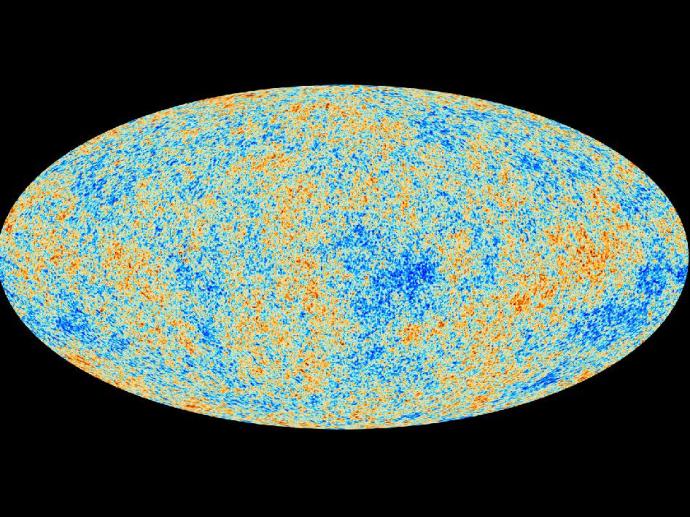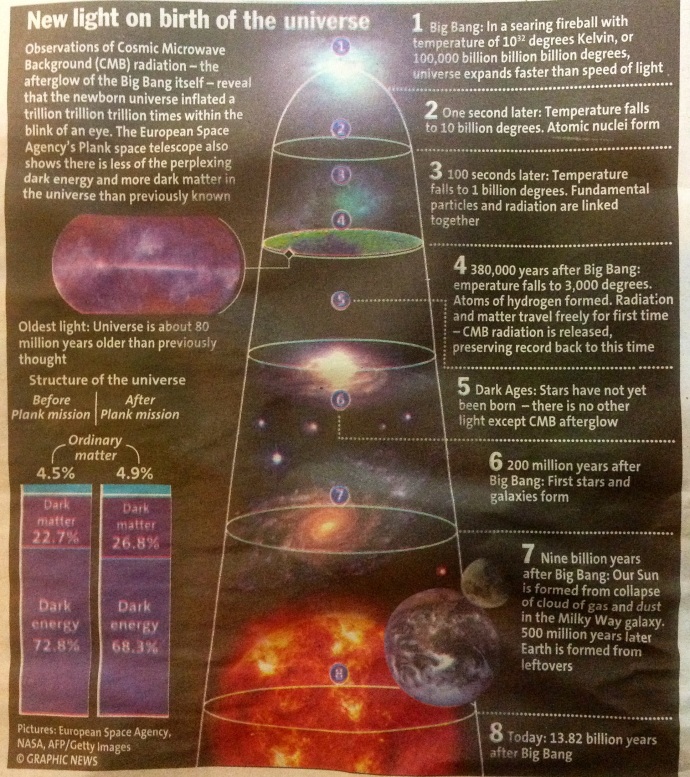Isn’t that one interesting map – never seen anything like that before – and those dots of blues and yellows reveal so much!
Basically, the mottling in the map represents small changes in the CMB background, which permeates the universe. The cool part is, these deviations are essentially the “seeds” of the stars, galaxies, and clusters we see today – the “seeds” of matter.
I guess the density differences amplified with time – but that’s just me making sense of it…
And the pattern: the age, shape and contents of the universe.
But if you still can’t decipher the map (like myself), check out the picture below. Took this snapshot from the newspaper I was just reading – and I think it’s a wonderful summary of the breakthroughs of the Planck Mission, and also of the timeline of our expanding universe.
Though I must add, the Planck Mission (by NASA/ESA) has also proved that temperature differences in the opposite hemispheres of the sky (it’s the first I’m hearing the universe has hemispheres – must read up a bit about this!) are not anomalies of measurement (as they were once thought of), but the real deal…and there’s something about a “cold spot” as well: it’s now proven to be bigger than predicted.
Cool stuff right.
Here’s some links if you’ll like to find out a bit more:
Planck Mission Brings Universe Into Sharp Focus
New View of Primordial Universe Confirms Sudden “Inflation” after Big Bang
The first link is NASA’s article, and has much more detail. The second is by Scientific American, easier to digest 😉
ps. The CMB (cosmic microwave background) is essentially light, the earliest light in our universe, produced when the first elements, Hydrogen and Helium were formed. This was 380 000 years after the formation of our universe. But as the universe expanded, the wavelength of these light waves lengthened, and now it is of the microwave radiation wavelength – wonder if it will ever become radio waves!



